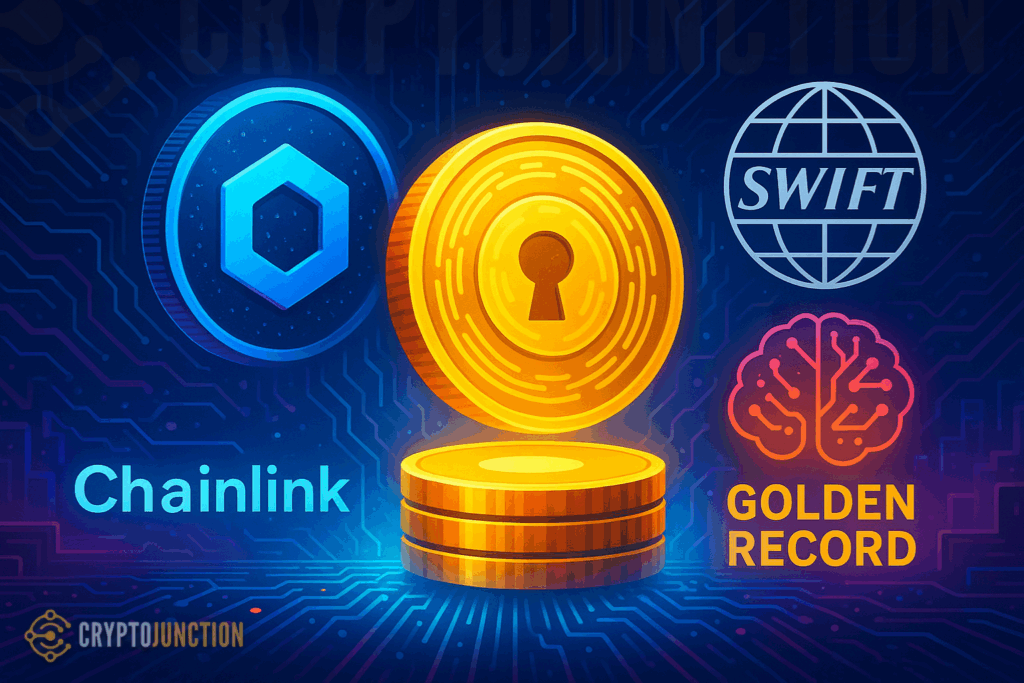Chainlink isn’t slowing down. The decentralized oracle network just completed the second phase of its pilot program with some of the biggest names in global finance. This showcases the potential of Chainlink Swift integration. The results hint at a structural shift in how corporate actions and data flows will work in the future. By combining blockchain infrastructure, decentralized oracles, and artificial intelligence, Chainlink has given institutions a glimpse of streamlined, verifiable financial operations at scale.
The list of participants reads like a who’s who of market infrastructure: DTCC, Swift, Euroclear, along with major banks including UBS, DBS, and BNP Paribas Securities Services. Add in buy-side giants like Schroders, Wellington Management, Zürcher Kantonalbank, ANZ, and Vontobel. It’s clear that the pilot isn’t just theory; it’s being tested by firms at the core of global capital markets.
Chainlink Swift Integration: Coordinating AI and Blockchain for Corporate Actions
The pilot wasn’t a simple blockchain test. Instead, it demonstrated the Chainlink Runtime Environment, which coordinated outputs from multiple AI models. This included OpenAI’s GPT, Google’s Gemini, and Anthropic’s Claude. These outputs were validated, structured, and recorded as “unified golden records onchain” through the Chainlink Swift integration.
That matters because corporate actions — mergers, dividends, stock splits — are still some of the most expensive and inefficient processes in finance. A Citi study cited in the release showed that the average corporate action event involves over 110,000 firm interactions. It also showed that it costs $34 million to process, with most participants still relying on manual data revalidation.
Using the Chainlink Swift connection, the system sent those golden records with ISO 20022-compliant messaging directly through Swift’s network. After validation, DTCC’s blockchain ecosystem, along with other private and public networks, cryptographically verified them. The outcome: verified data consensus and fewer reconciliation errors. Additionally, it resulted in faster, more reliable settlement, highlighting the benefits of Swift integration with Chainlink.
Driving Asset Tokenization Forward
One of the most intriguing outcomes of the pilot was its impact on asset tokenization. While the industry has been discussing tokenization for years, actual implementations at scale have been rare. However, the institutions involved in this study — from asset managers to global banks — began testing how equities, funds, and even real estate titles could be moved onchain, aided by Chainlink Swift integration.
The results suggest that integration between Chainlink and Swift doesn’t just streamline back-office inefficiencies. It also sets the stage for tokenized markets. With standardized, verifiable messaging formats and blockchain-based auditability, financial institutions can begin treating tokenized assets as extensions of existing infrastructure. They do this rather than viewing them as speculative experiments.
The potential savings are staggering. Citi estimates tens of billions annually could be unlocked by reducing settlement errors and cutting down reconciliation costs. For institutions, that’s not just operational efficiency — it’s a direct boost to profitability and risk management.
A Real-World Shift, Not Just a Proof of Concept
The real twist is that this isn’t an isolated sandbox demo. The pilot represents the second phase of a broader industry initiative to standardize corporate actions with AI, blockchain, and oracles. And it already shows that legacy systems can plug directly into decentralized infrastructure without overhauling their entire architecture.
That’s why this matters: global finance runs on deeply entrenched systems. But the success of Chainlink Swift integration proves that incremental adoption is possible. Firms don’t have to rip out what works. Instead, they can upgrade processes by layering Chainlink’s infrastructure on top.
For the crypto-native audience, the signal is clear. Chainlink isn’t chasing hype — it’s executing at the intersection of AI, blockchain, and the financial plumbing that moves trillions every day. The endgame is broader than corporate actions alone. With tokenization already in play, this could mark the start of a global shift. Decentralized truth and automation could power capital markets instead of legacy bottlenecks
And if that’s the case, blockchain may not just shape the future of finance — Chainlink itself may manage it.

